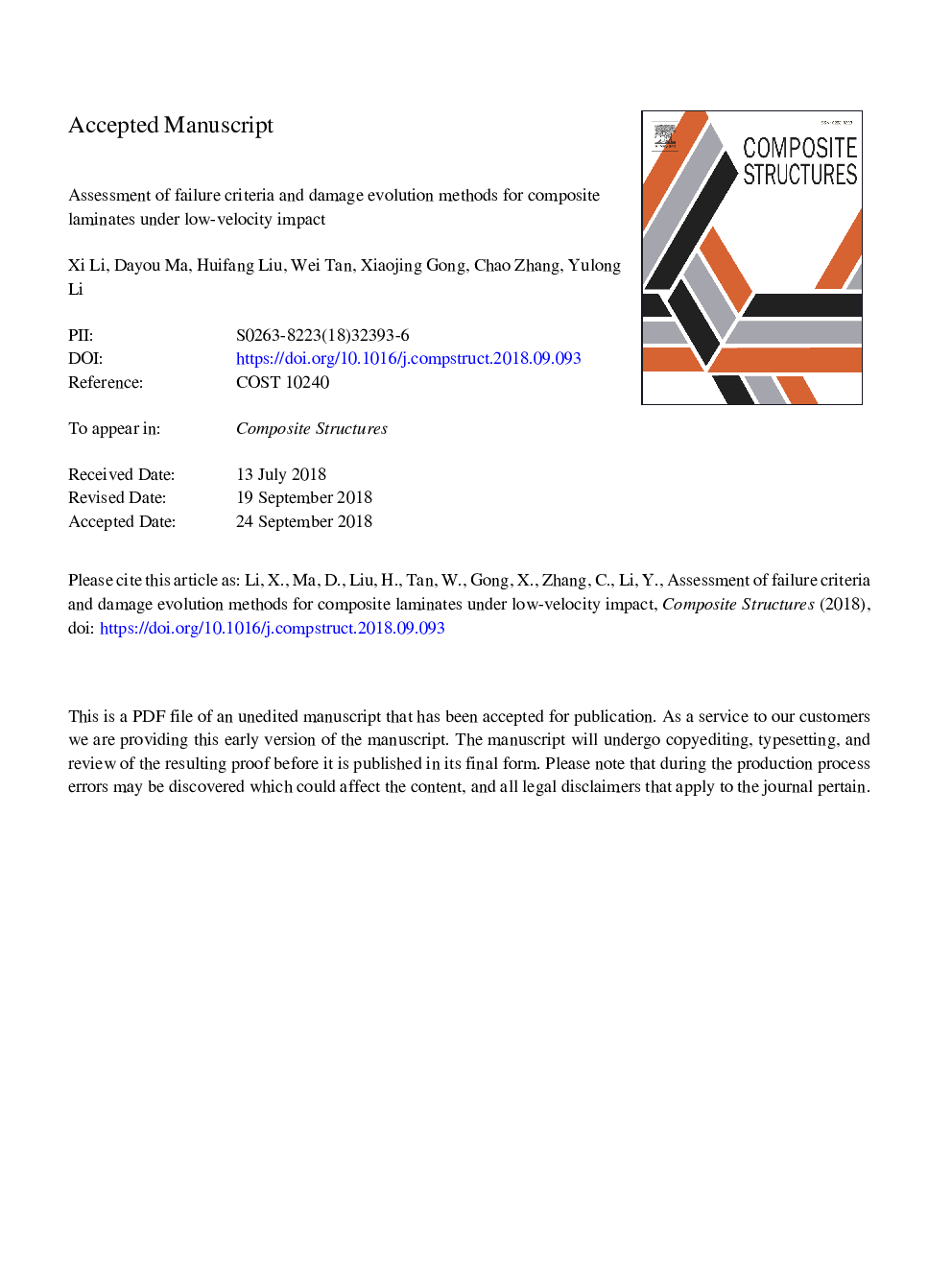| Article ID | Journal | Published Year | Pages | File Type |
|---|---|---|---|---|
| 11024296 | Composite Structures | 2019 | 40 Pages |
Abstract
This study aims to evaluate the applicability of failure criteria and damage evolution methods in the finite element analysis of composite laminates under low-velocity impact. Implemented by the user-defined VUMAT subroutine in ABAQUS, various progressive damage models are used to predict damage initiation and accumulation in a T700GC/M21 composite laminate. Cohesive elements are inserted between adjacent plies to capture interface delamination. The applicability of damage models is investigated by comparing the global mechanical response and distribution of various damage modes. A new variable, equivalent damage volume, is introduced to quantitatively describe the predicted damage when using different models. The numerical results establish that Hashin and Puck failure criteria generate matrix compression damage in more layers of the composite. Maximum stress and Tsai-Wu criteria are not preferred due to their improper predictions in terms of damage area and permanent deformation of the laminate. As for damage evolution laws, the equivalent strain method provides faster stiffness degradation of the laminate and a smaller area of matrix damage compared with the predictions of the equivalent displacement method.
Keywords
Related Topics
Physical Sciences and Engineering
Engineering
Civil and Structural Engineering
Authors
Xi Li, Dayou Ma, Huifang Liu, Wei Tan, Xiaojing Gong, Chao Zhang, Yulong Li,
